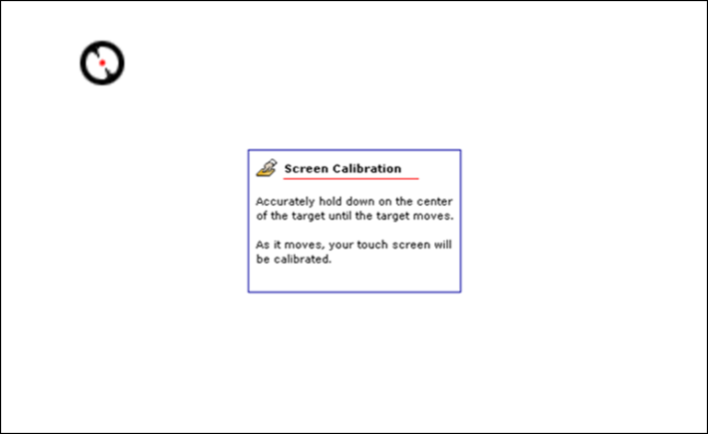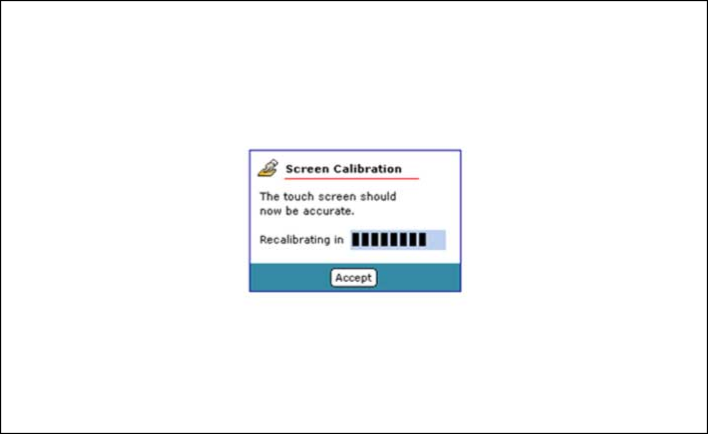Calibrate a touchscreen
The calib-touch utility is a window manager. If your startup script launches another window manager, it's best to run calib-touch before running the other window manager.
Syntax:
calib-touch [-config-file=config_file] [-display=display_id] [-exit-on-timeout] [-format=pixel_format] [-interval=swap_interval] [-pos=x,y] [-recalibrate] [-sample-limit=sample] [-size=widthxheight] [-verbose=level] [-zorder=zorder]
Runs on:
QNX Neutrino
Options:
- -config-file=config_file
- Set an alternative configuration filename, as a string (default is /etc/system/config/calib.hostname). This calibration tool requires access to write a configuration file. If /etc/system/config is on a read-only filesystem, then you will need to specify a different path and filename so that calib-touch has permissions to write the configuration file.
- -display=display_id
- Set the display ID (integer) or the connection type (string)to the
display. If you provide an integer, Screen interprets the integer
as the indication of the display identifier. Otherwise, if you provide a string,
Screen interprets the string as the
display connection type. The connection type of display port can be one of
the following strings:
- internal
- composite
- svideo
- YPbPr
- rgb
- rgbhv
- dvi
- hdmi
- rgbhv
- -exit-on-timeout
- Exit this application after 5 seconds of inactivity on each calibration screen, or 30 seconds of inactivity on the final calibration screen. Otherwise, the application restarts the calibration procedure.
- -format=pixel_format
-
Set the pixel format, as a string, of the window (default is the pixel format assigned by
Screen Graphics Subsystem). The pixel format can be one of
the following strings:
- rgba8888
- rgbx8888
- rgb565
- -interval=swap_interval
- Set the swap interval, as an integer (default is 1). The swap interval is the minimum number of vsync periods between image updates.
- -pos=x,y
- Set the position, using integer x and y coordinates, of the viewport (default is 0, 0).
- -recalibrate
- Perform a calibration despite the existence of a calibration file. The existing calibration file will be overwritten. You may need to recalibrate if you make any changes related to the touch device (e.g., changing your display or display resolution).
- -sample-limit=sample
- Set the number of samples, as an integer, for each target (default is 10).
- -size=widthxheight
- Set the size, using integer values for width and height, of the viewport (default is fullscreen).
- -verbose=level
- Set the verbosity level, as an integer (default is 0).
- -zorder=zorder
- Set the z-order, as an integer, of the window (default is 0).
Description:
The calib-touch utility is a command-line tool that's used to calibrate a touchscreen. Once the touchscreen is successfully configured, the calib-touch utility saves a configuration file at /etc/system/config/calib.hostname.
Prior to starting the touch calibration, ensure that you have an appropriate begin mtouch section in your graphics.conf file to define your touch device.
To run the calibration tool:
- Ensure that screen is running.
- Run calib-touch from either your startup script or from a shell.
- Touch the bull's-eye targets on each of the display screens.
- Touch the Accept button to finish calibration.
You can use the Esc key to exit the calibration tool at any time.
Examples:
Calibrate for fullscreen:
calib-touch

Figure 1. First calibration screen

Figure 2. Second calibration screen

Figure 3. Third calibration screen

Figure 4. Final calibration screen